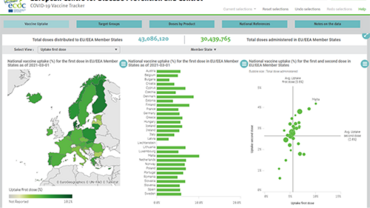COVID-19
What is COVID-19?
COVID-19 is the disease caused by the virus called severe acute respiratory syndrome coronavirus-2 (SARS-CoV-2). SARS-CoV-2 is a new strain of coronavirus. It had not been identified in humans before December 2019.
The current COVID-19 outbreak started in late 2019 and on 11 March 2020, the World Health Organization (WHO) declared it a pandemic.
On 4 May 2023, the WHO Director-General determined that COVID-19 is no longer a public health emergency of international concern. He highlighted that whilst there are higher levels of population immunity and fewer hospitalisations and deaths, there are still uncertainties related to how the SARS-CoV-2 might evolve.

What are the symptoms of COVID-19?
The main symptoms of COVID-19 are:
- fever
- cough
- general weakness or fatigue
- a change in or loss of taste or smell
- sore throat
- headache
- muscle pains
- diarrhoea.
The severity of the disease varies widely from person to person.
Some people with COVID-19 are asymptomatic. This means that they have no symptoms at all.
In serious cases, symptoms can include
- difficulty breathing or shortness of breath
- confusion
- chest pain.
People with severe symptoms may need specialised medical care and support.
A patient’s condition can quickly worsen and if so, this will often occur during the second week of the disease.
Unfortunately, some people with COVID-19 need to go to hospital. Some of them may even require intensive care, occasionally for extended periods.
What are the complications of COVID-19?
People with severe symptoms affecting the airways may need to go on a respirator (mechanical ventilation support). This can make them more susceptible to catching an infection on top of COVID-19, such as pneumonia.
Some COVID-19 patients are also at higher risk of complications related to blood clotting, such as strokes or heart attacks.
The likelihood of needing to go into hospital is higher for older people, in particular, people over 60 years and those with underlying health conditions.
In general, the risk of dying from COVID-19 is low, but higher than it is for flu. The risk of dying is higher in older people, as well as in people who have long-term illnesses or underlying conditions.
What is post-COVID-19 condition or long COVID?
A small number of patients may suffer long-term effects from SARS-CoV-2 infection. This is called post-COVID-19 condition, also known as ‘long COVID-19’.
Post-COVID-19 condition may affect patients of all ages, including people who only had mild COVID-19 symptoms when first infected.
Symptoms include:
- loss of smell or taste
- fatigue
- general weakness
- shortness of breath
- cognitive impairment.
There is no test to diagnose post-COVID-19 condition and symptoms may last weeks, months, or longer. There is currently no treatment for this condition, however, evidence suggests that individuals vaccinated against COVID-19 are less likely to report post-COVID-19 condition symptoms.
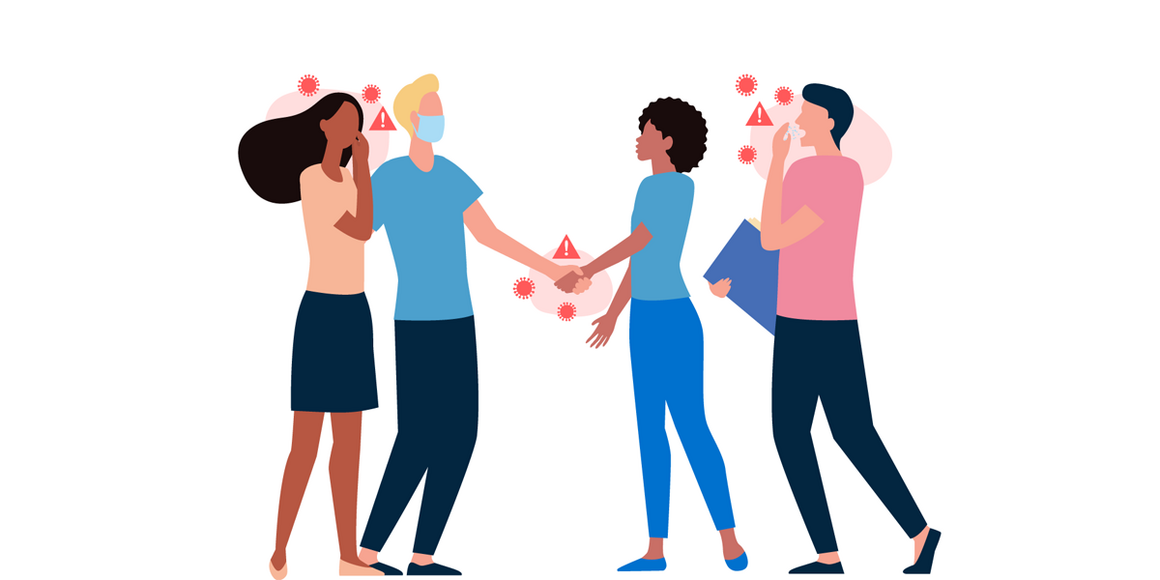
How does COVID-19 spread?
The SARS-CoV-2 virus spreads from person to person primarily via particles released into the air when an infected person breathes, particularly when speaking, singing, shouting, sneezing, coughing, etc. These particles can then reach other people close by (usually up to two metres away), who can breathe them in.
Transmission from one infected person to another can start two days before the infected person even begins to show symptoms. On average, one infected person will infect up to five other people, if they do not take any measures to prevent transmission.
It usually takes five to six days for someone to start showing symptoms after being infected. However, this can vary from one day to two weeks.
Larger particles (droplets) can also land on surfaces that other people touch. These people may then pick the virus up on their hands and become infected when they touch their nose, mouth or eyes. However, this route of transmission is far less common than person-to-person transmission.
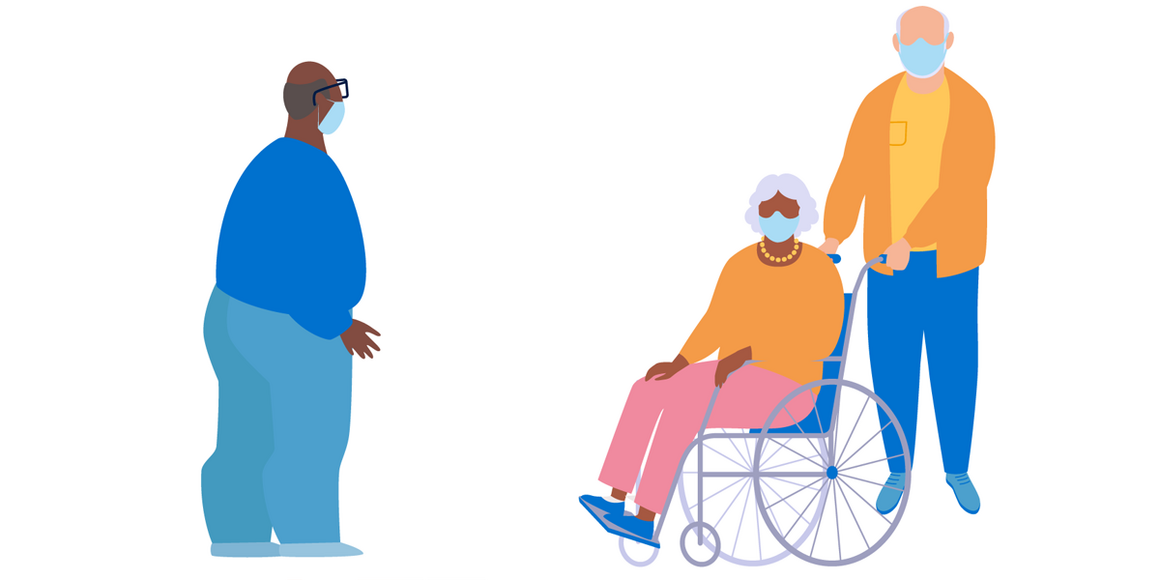
Who is at risk of COVID-19?
Everyone is at risk of getting COVID-19.
However, some population groups are more likely to develop severe disease. These include people over 60 years and pregnant women, as well as people with underlying health conditions, such as:
- obesity
- high blood pressure
- diabetes
- heart disease
- long-term diseases affecting the lungs and airways
- conditions affecting the nervous system
- a weakened immune system.
Symptoms in adults also tend to be more severe than in children. Nevertheless, children still pass the virus on to others, and some do develop severe disease.
Crowded indoor spaces provide opportunities for COVID-19 to spread quickly: prisons, migrant centres and food-processing plants have all seen significant outbreaks.
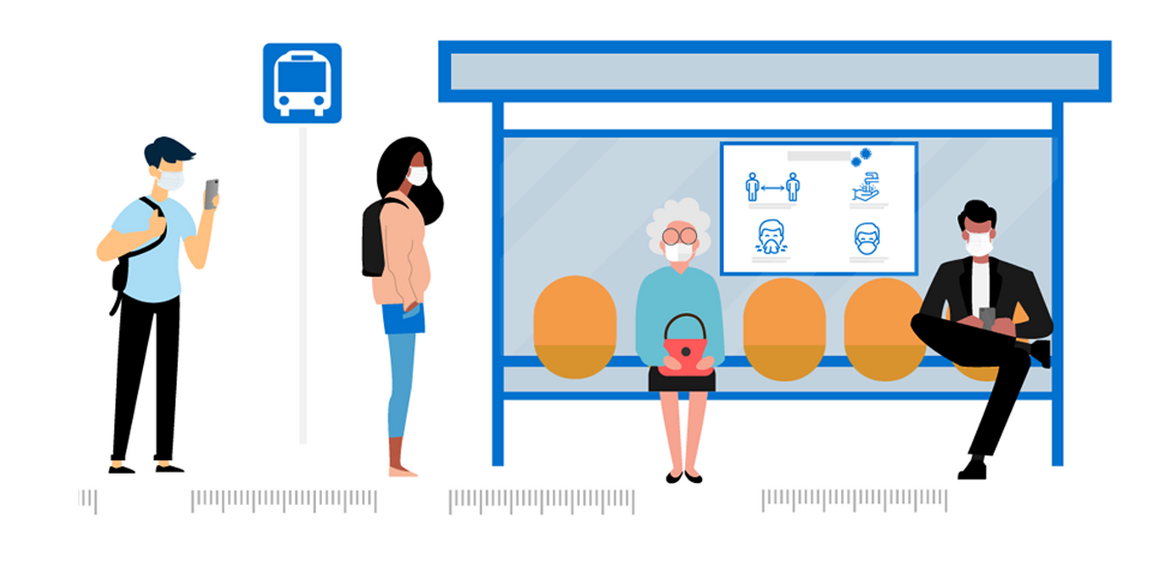
How can COVID-19 be prevented?
The most effective way to prevent COVID-19 is vaccination. People who are vaccinated are less likely to have severe disease or to need to go into hospital. This is why public health authorities urge all eligible people to get fully vaccinated against COVID-19 as soon as possible. Read more about COVID-19 vaccines.
Washing hands frequently with soap and water or using alcohol-based solutions also helps prevent the transfer of the virus from the hands into the body via the eyes, nose or mouth. For more details, see our infographic on non-pharmaceutical measures.
Vaccines authorised for use in the European Union
Bimervax
Bimervax contains a protein produced in the laboratory that consists of part of the SARS-CoV-2 spike protein from the Alpha and Beta virus variants.
VidPrevtyn Beta (Sanofi Pasteur)
VidPrevtyn Beta contains a version of a protein found on the surface of SARS-CoV-2 (the spike protein of the virus that causes COVID-19), which has been produced in the laboratory.
Valneva (Valneva)
Valneva contains whole particles of the original strain of SARS-CoV-2 (the virus that causes COVID-19) that has been inactivated (killed) and cannot cause the disease.
Nuvaxovid (Novavax)
Nuvaxovid contains a version of a protein found on the surface of SARS-CoV-2 (the spike protein), which has been produced in the laboratory.
Jcovden (Janssen-Cilag)
Jcovden is made up of another virus (of the adenovirus family) that has been modified to contain the gene for making a protein found on SARS-CoV-2.
Vaxzevria (AstraZeneca)
COVID-19 Vaccine Vaxzevria is made up of another virus (of the adenovirus family) that has been modified to contain the gene for making a protein from SARS-CoV-2.
Spikevax (Moderna)
Spikevax contains a molecule called messenger RNA (mRNA) with instructions for producing a protein from SARS-CoV-2, the virus that causes COVID-19. Spikevax does not contain the virus itself and cannot cause COVID-19. Spikevax is also available as two adapted vaccines.
Comirnaty (BioNTech/Pfizer)
Comirnaty contains a molecule called messenger RNA (mRNA) with instructions for producing a protein from SARS-CoV-2, the virus that causes COVID-19. Comirnaty is also available as two adapted vaccines.
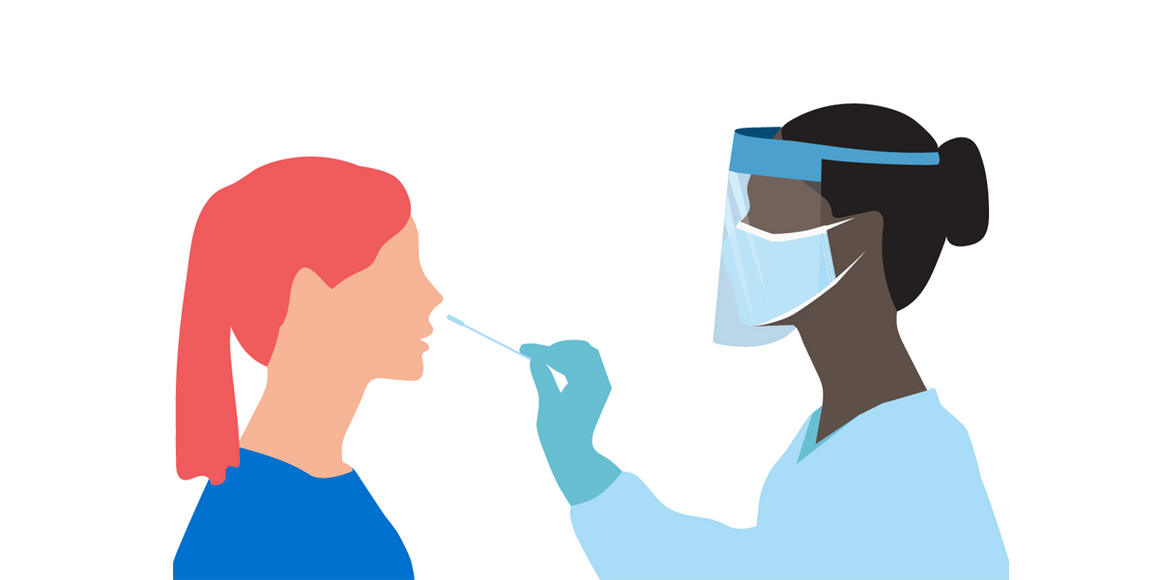
How is COVID-19 treated?
Medicines to treat COVID-19 that target the virus directly are becoming available. However, these are mainly used to prevent severe disease in high-risk groups.
The main treatment for most patients with severe disease is supportive care, (e.g. using oxygen therapy and managing fluid levels) which is often highly effective.
For the latest information on COVID-19 treatments, visit the European Medicines Agency’s (EMA) website: Treatments and vaccines for COVID-19 or the European Commission website: Treatments for COVID-19 (europa.eu)
Further information
--------------------------------------------------------------------
Reference:
(1) WHO Director-General's opening remarks at the media briefing on COVID-19
Note: This factsheet is intended for the purpose of general information and should not be used as a substitute for the individual expertise and judgement of a healthcare professional.

